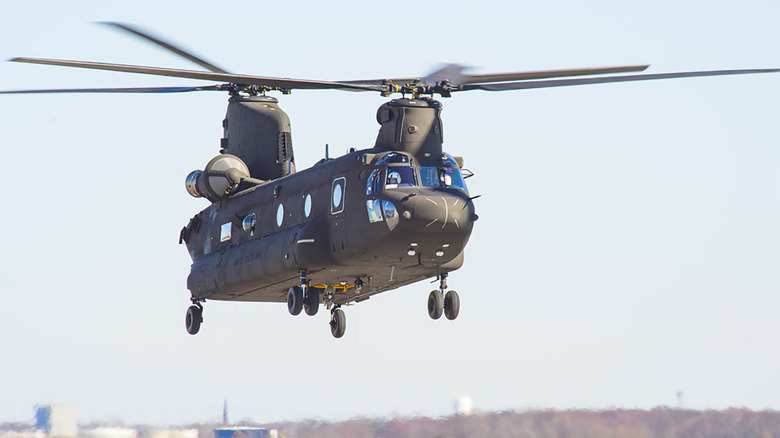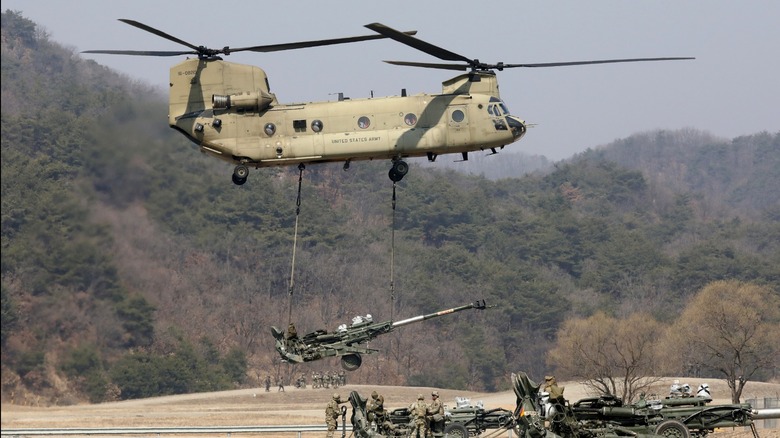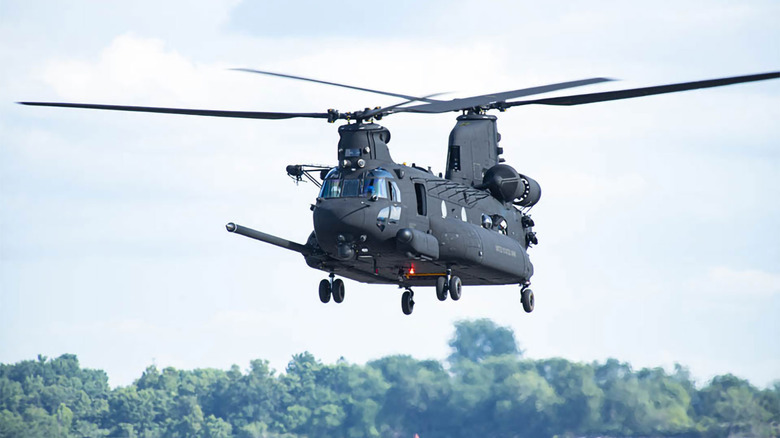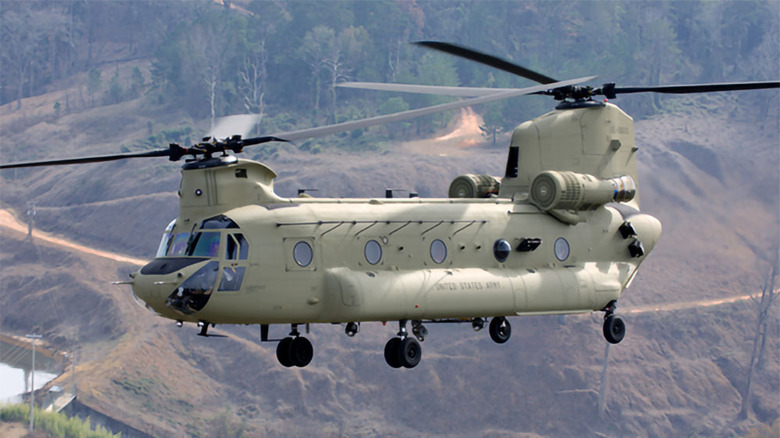The CH-47 Chinook: How Boeing Has Engineered A 60-Year Legacy Of Flight
When considering the history of American military helicopters, arguably no other aircraft has had the longevity of Boeing's CH-47 Chinook. Iconic for its distinctive long-body design, the U.S. Army has deployed the Chinook since the helicopter took its first flight in 1961. Utilized in various military applications, including cargo and troop transport, search and rescue missions, and evacuations, the CH-47 has been a testament to engineering excellence since it first saw combat during the Vietnam War.
Today, the Chinook is used worldwide by over 20 countries, including the U.S. Army and nations like Australia, Canada, and South Korea. Over the years, the aircraft has seen a number of upgrades and core enhancements, with the newest model, the CH-47F, capable of flying up to 20,000 feet and hauling over 25,000 pounds.
What makes the CH-47 Chinook such a workhorse, and why has the U.S. Army used it for over 60 years? Unlike other aircraft, such as the rather controversial Lockheed F-35 stealth jet, there's absolutely no question among military circles whether the development and manufacturing of the Chinook was worth it. The proof is in the helicopter's extensive and decades-spanning combat and flight history.
The storied origins of the CH-47 Chinook
Development of the CH-47 Chinook dates back to the late 1950s, when the U.S. Army moved to replace the Sikorsky "Deuce" CH-37 Mojave. The helicopter had served as a heavy-lift platform, however, only 55 entered service as deployment revealed its shortcomings. Unlike the Mojave, the Chinook offered an innovative tandem rotor system and twin-engine design capable of transporting more troops and cargo than any helicopter that came before it.
Named for the Native American Chinookan, the Vertol Aircraft Corporation started development on the helicopter in 1958. In 1960, Boeing bought out Vertol, and the first flight for the Chinook would happen in 1961 under the Boeing name. The aircraft was renamed the CH-47. The CH is an abbreviation for "Cargo Helicopter."
The Chinook can haul heavy loads using a sling that hangs under the helicopter. This cargo system can load and transport vehicles and heavy artillery like the 155-millimeter M777 howitzer. In addition, the Chinook is designed to carry 36 fully-kitted troops and, amazingly, reportedly carried 147 refugees in a single lift near the end of the Vietnam War. Later, the Chinook would be used in a variety of other operations, all the way up to and including the conflicts in Afghanistan and Iraq.
The CH-47 Chinook is a powerful piece of American engineering
At 52 feet long and 18 feet high, the CH-47 Chinook can reach speeds of nearly 200 miles per hour. Its dual rotors are powered by Honeywell T55 engines, which have also been upgraded over the years, with the T55-714C from 2021 being fitted in the chopper as the latest iteration of the engine.
This newest Honeywell engine is able to generate 6,000 shaft hp at sea level, compared to the Chinook engine of the 1960s, which could only produce a little over 2,050. Today's CH-47 can also carry almost 50,000 pounds. However, it's not just the engine that's been updated with the times in the CH-47; it also possesses a host of other enhancements that make it a modern military vehicle despite its age. Its fuel tanks have undergone a redesign too. And that's just one of many things.
Specifically, the new CH-47 Chinooks now come equipped with an advanced digital cockpit management system, upgraded drivetrain and a bolstered fuselage.
The Army will use the Chinook until 2060
The U.S. Army plans to utilize the CH-47 Chinook helicopter until the 2060s, which will make the helicopter 100 years old by the time it's considered for retirement. However, it wouldn't be accurate to say that the CH-47 Chinook from the 1960s is the same aircraft the U.S. Army utilizes today.
Indeed, while it might appear on the outside to look almost identical, continuous improvement and robust maintenance over the years to the helicopter's components makes the Chinook, and especially the latest CH-47F Block 2 models, a viable modern military aircraft. This, in part, has led to the aircraft's outstanding and rather unique longevity. In total, various models of the Chinook have been manufactured, including the CH-47A, B, C, D, E, and F. There is also the special MH-47G Chinook, designed specially for the U.S. Army Special Operations Command.
Recently, Boeing announced that the Egyptian military requested it deliver the CH-47F Block 2 — the Chinook's latest model — to help modernize its fleet. Those helicopters are expected in 2026. Today, CH-47s are currently deployed for various militaries worldwide. The strong design foundations and continuous improvement of the CH-47 have enabled it to find profound longevity. And it will continue to be used around the world for the foreseeable future.



